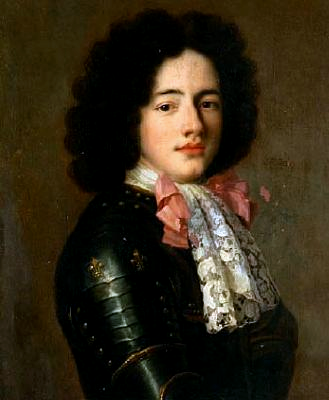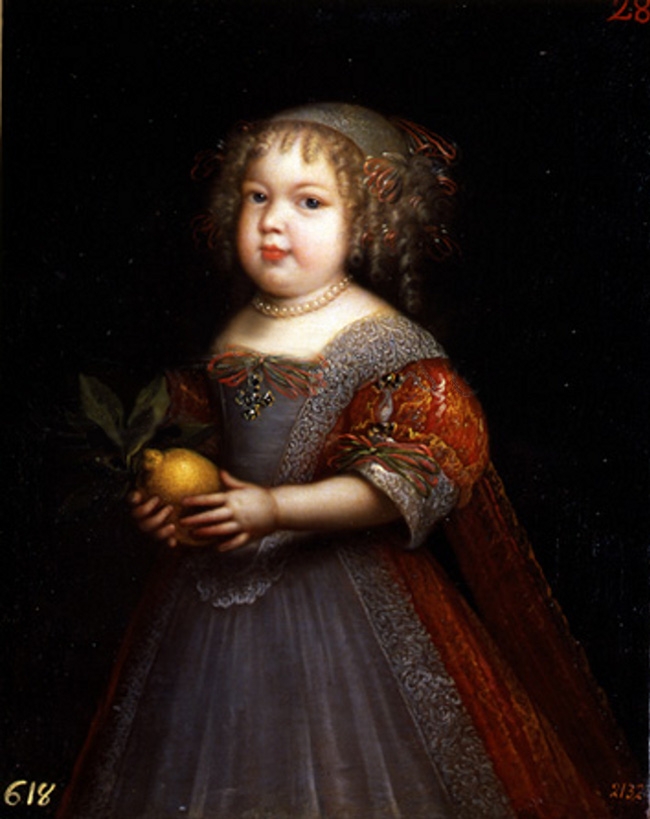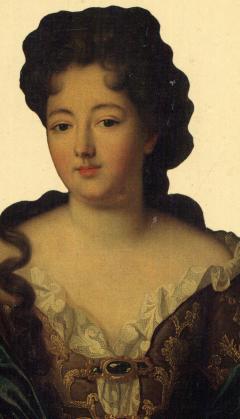Louise de Kérouaille
Born on 6 September in 1649, into a noble but relatively poor Breton family, Louise Renée de Penancoët de Kérouaille, was the daughter of Guillaume de Penancoët, Seigneur de Kérouaille, and Marie de Ploeuc de Timeur.
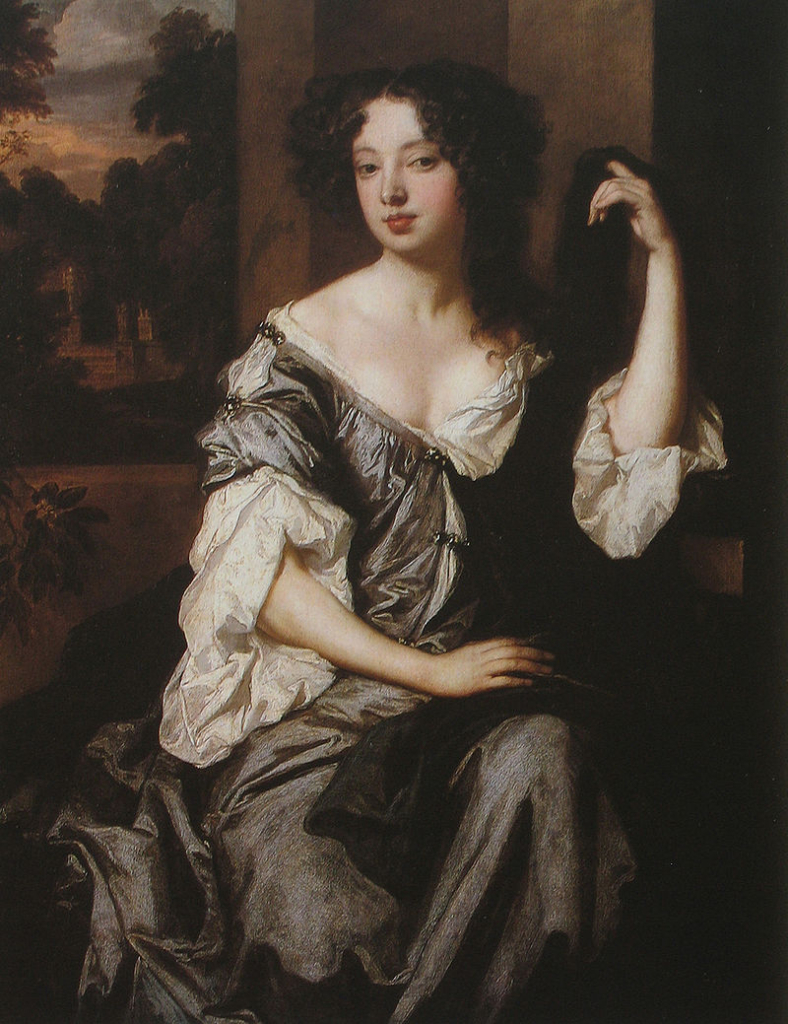
Louise was introduced, at an young age, into the household of Henriette d’Angleterre, Duchesse d’Orléans, sister of Charles II of England, and sister-in-law of Louis XIV. Louis de Rouvroy, Duc de Saint-Simon, asserts that her family threw her in the way of Louis XIV in the hope that she would become a royal mistress, she instead became that of Charles II.
The French poet Charles Robinet stated that Henriette’s “new maid-of-honour is as sweet as she is beautiful“. In 1670 Louise accompanied Henriette on a visit to Dover to negotiate a treaty with her brother Charles II, by the terms of the treaty, Charles was to convert to Catholicism when the time was ripe in return for a lucrative French pension. As Henriette died shortly after this trip to England, Louise was left unprovided for. Luckily, Charles II took pity and appointed her a lady-in-waiting to his own Queen, Catherine of Braganza.
Louise was both intelligent and strong willed, very pretty, with dark hair and eyes and a child like beauty. John Evelyn, the diarist, referred to her “baby face“.
It was rumoured that Louis XIV sent her to England to seduce Charles II and to do a bit of spying. The support she received from France, for example a pair of earrings worth eighteen thousand pounds, was certainly provided on the understanding that she should serve the interests of her native country. One reason why the people of England were not too fond of her.
Louise gave birth to a son, Charles Lennox, on 29 July 1672, who was created Duke of Richmond in 1675. The title had been held by Charles’ Tudor ancestors, both Henry VII and his father, Edmund Tudor, had previously held it, as had Henry VIII’s illegitimate son, Henry FitzRoy. He was given the surname Lennox, after Charles’ Stuart ancestors, the Dukes of Lennox. Louise herself received the titles Baroness Petersfield, Countess of Fareham and Duchess of Portsmouth on 19 August 1673. Her pension and money allowances of various kinds were enormous for the time.
She received frequent presents from France, and in December 1673, by the request of Charles, even the title of Duchesse de Aubigny.
Charles’ nickname for Louise was ‘Fubbs’, meaning plump or chubby and in 1682 a new royal yacht, HMY Fubbs, was named after her. Nell Gwynne, another of Charles’ mistresses, referred to her, less affectionately, as “Squintabella” and when mistaken for her replied, “Pray good people be civil, I am the Protestant whore.“. Louise and Nell would prove rivals for many years. While Louise was very proud of her noble Breton birth, Nell was a true child of the London’s streets.
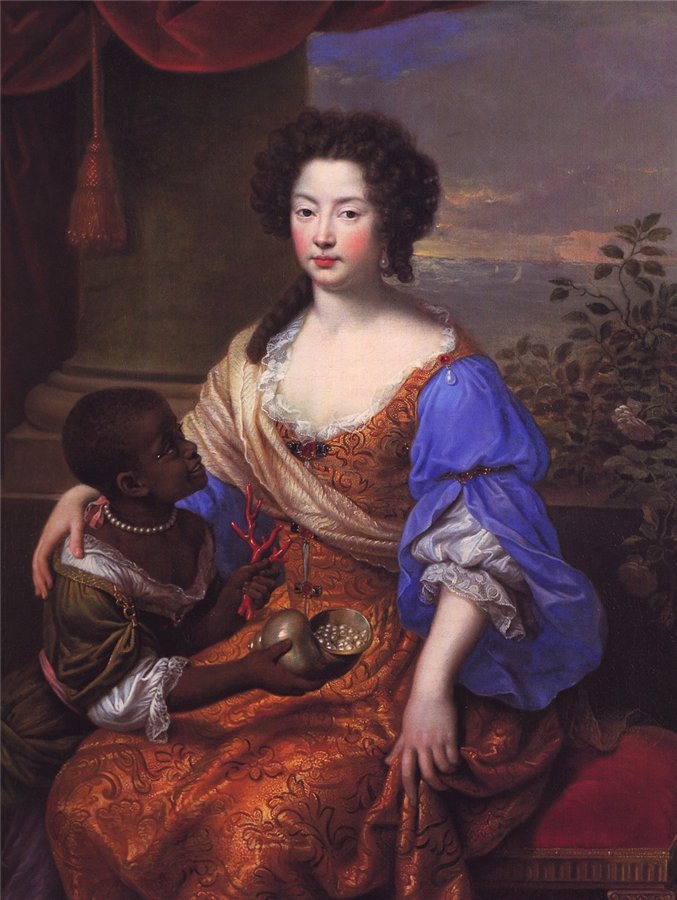
Louise’s thorough understanding of Charles’ character enabled her to retain her hold on him to the end. She contrived to escape uninjured during the crisis of the “Popish Plot” in 1678 and she found an unexpected ally in Catherine of Braganza, who was grateful for the kindness and consideration which Louise had always shown her. She was strong enough to maintain her position during a long illness in 1677 and a visit to France in 1682.
In February 1685 she assisted in measures to see that Charles II was received into the Catholic Church on his deathbed. That Charles was truly attached to her is shown by his death-bed instructions to his brother to “do well by Portsmouth”, making her one of three women in his life, along with the Queen and Nell Gwynne, who were in his thoughts at the end.
Soon after the death of Charles II, Louise quickly fell from favour. She retired to France, where, except for one short visit to England during the reign of James II and her attendance at the Coronation of George I, she remained.
Louise lived at Aubigny and was harassed by debt, but Louis XIV, and after his death the Regent Philippe II, Duc d’Orléans, provided her with a pension, to protect her against her creditors.
Louise died in Paris on 14 November 1734, aged 85. Through her son by Charles she would become ancestress to Diana, Princess of Wales, and Camilla, Duchess of Cornwall.
